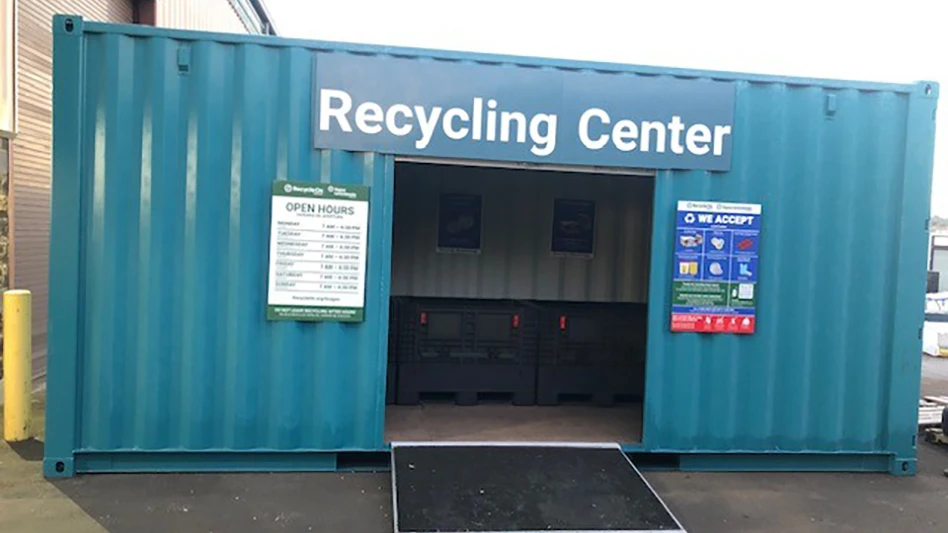There are many end markets to be established before zero waste can be anything more than an aspiration, but the aspiration alone is driving research and development. Panelists at a session on zero waste at Wastecon, the annual convention of SWANA (the Solid Waste Association of North America), had differing views on steps that need to be taken toward the goal.
Co-presenters Wilma Bureau of the County of Simcoe, Ontario, Canada, and Janine Ralph of Stantec Consulting, Burlington, Ontario, portrayed how the county has reached a 57 percent municipal solid waste (MSW) diversion rate.
Simcoe County, with 350,000 people in 16 municipalities, has a blue box household recyclables collection program, a green bin program for organics (food waste) and a one-bag limit on household garbage collection. A drop-off center accepts tires, wood, backyard brush, shingles and other recyclable materials.
The most recent study conducted by Stantec for the County of Simcoe found that C&D materials “could be managed better” for increased recycling and that increased attention to recyclables collection in public spaces and at events also could improve the diversion rate.
Ralph said that getting to a 71 percent diversion rate was feasible without dramatically increasing costs, but that introducing a mixed waste processing step or a waste-to-energy step would be necessary to achieve a diversion rate much higher than that.
Mitch Kessler of Kessler Consulting Inc., Tampa, Fla., listed several barriers to boosting diversion rates in places such as Florida, where legislators have set a 75 percent diversion rate goal.
Among the barriers Kessler sees are changing people’s behavior (i.e. throwing out plastic bottles); moving away from disposal-based funding methods (when landfill tip fees pay for county solid waste budgets); developing regional end markets for several materials; and a lack of “political will” in some regions to back recycling. (More on Kessler’s viewpoints can be found in the April 2010 Recycling Today article “Two Shades of Green.”).
Common denominators Kessler sees in states or solid waste districts with high diversion rates include: adequate funding for recycling, disposal bans, bottle bills, market development grants or funding; attention to C&D recycling, a political champion willing to back recycling and technical assistance available to companies and solid waste districts.
Kessler said solid waste management costs communities money, and recycling advocates should not be shy about noting that there are upfront costs to establishing a recycling infrastructure. Ultimately, recycling and recovery can yield better fiscal results, he added. “We need to recognize there is money to be made in recovery,” Kessler commented.
Speaker Ruth Abbe of HDR Engineering, Omaha, Neb., gave an overview of how solid waste franchising in California has figured into solid waste district planning when zero waste is a goal.
She said many communities were re-considering local government ownership of facilities, and that they have had good recycling results when they issue separate contracts for collecting recyclables and solid waste versus processing recyclables and disposing of materials.
Wastecon 2011 was Aug. 23-25 at the Gaylord Opryland Resort in Nashville, Tenn.
Latest from Recycling Today
- US Steel to restart Illinois blast furnace
- AISI, Aluminum Association cite USMCA triangular trading concerns
- Nucor names new president
- DOE rare earths funding is open to recyclers
- Design for Recycling Resolution introduced
- PetStar PET recycling plant expands
- Iron Bull addresses scrap handling needs with custom hoppers
- REgroup, CP Group to build advanced MRF in Nova Scotia





